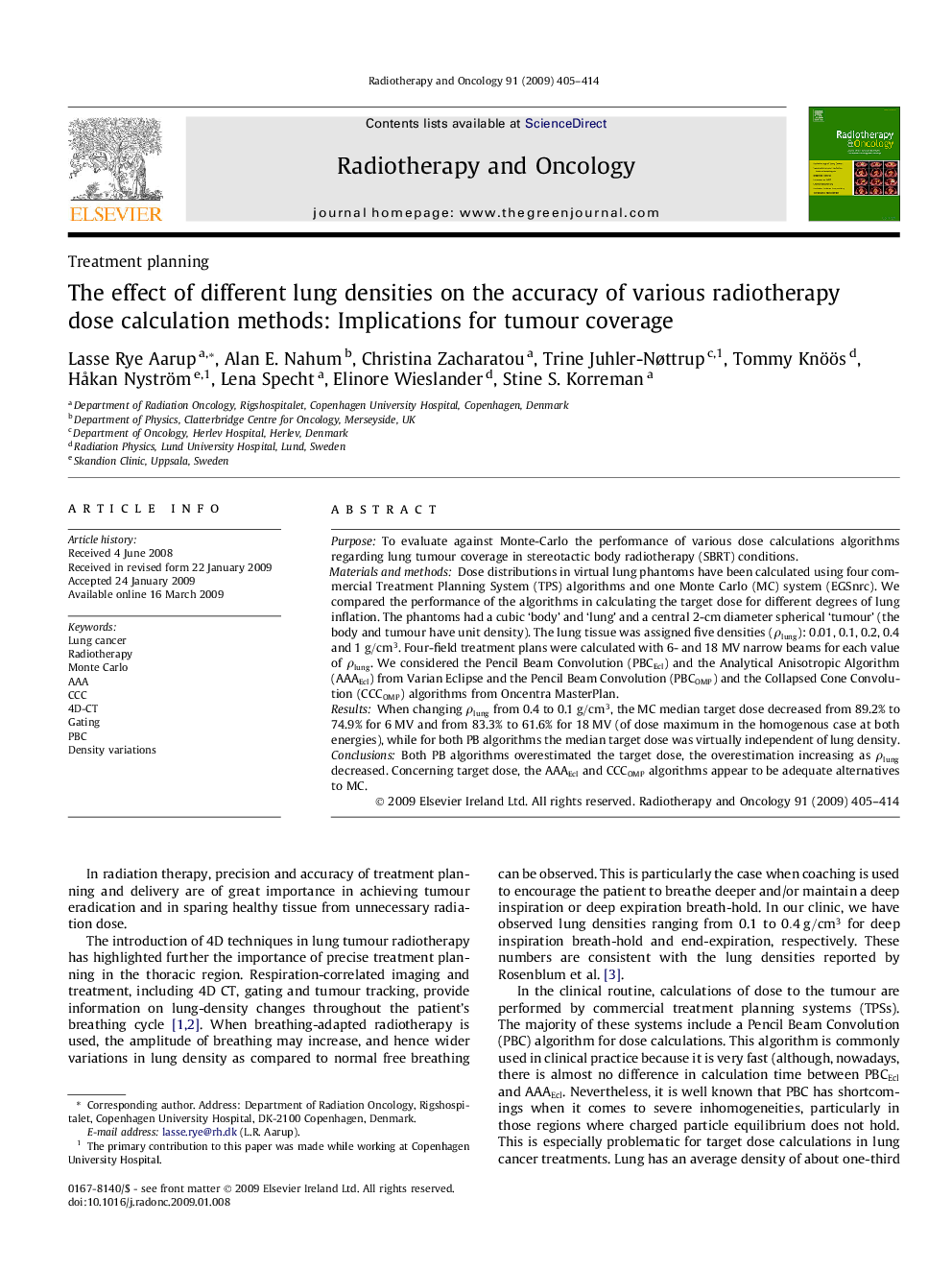| Article ID | Journal | Published Year | Pages | File Type |
|---|---|---|---|---|
| 2159124 | Radiotherapy and Oncology | 2009 | 10 Pages |
PurposeTo evaluate against Monte-Carlo the performance of various dose calculations algorithms regarding lung tumour coverage in stereotactic body radiotherapy (SBRT) conditions.Materials and methodsDose distributions in virtual lung phantoms have been calculated using four commercial Treatment Planning System (TPS) algorithms and one Monte Carlo (MC) system (EGSnrc). We compared the performance of the algorithms in calculating the target dose for different degrees of lung inflation. The phantoms had a cubic ‘body’ and ‘lung’ and a central 2-cm diameter spherical ‘tumour’ (the body and tumour have unit density). The lung tissue was assigned five densities (ρlungρlung): 0.01, 0.1, 0.2, 0.4 and 1g/cm3. Four-field treatment plans were calculated with 6- and 18 MV narrow beams for each value of ρlungρlung. We considered the Pencil Beam Convolution (PBCEclPBCEcl) and the Analytical Anisotropic Algorithm (AAAEclAAAEcl) from Varian Eclipse and the Pencil Beam Convolution (PBCOMPPBCOMP) and the Collapsed Cone Convolution (CCCOMPCCCOMP) algorithms from Oncentra MasterPlan.ResultsWhen changing ρlungρlung from 0.4 to 0.1 g/cm3g/cm3, the MC median target dose decreased from 89.2% to 74.9% for 6 MV and from 83.3% to 61.6% for 18 MV (of dose maximum in the homogenous case at both energies), while for both PB algorithms the median target dose was virtually independent of lung density.ConclusionsBoth PB algorithms overestimated the target dose, the overestimation increasing as ρlungρlung decreased. Concerning target dose, the AAAEclAAAEcl and CCCOMPCCCOMP algorithms appear to be adequate alternatives to MC.
